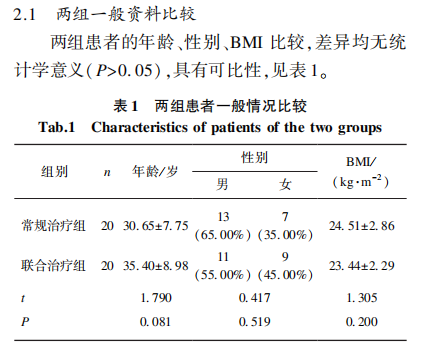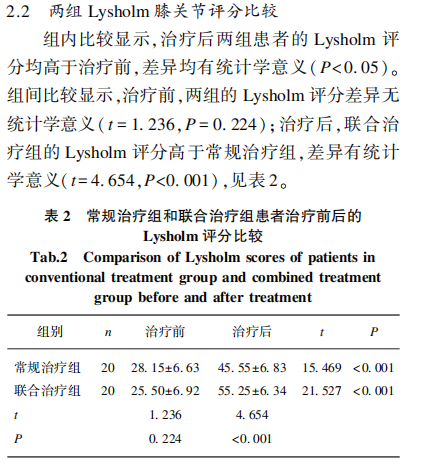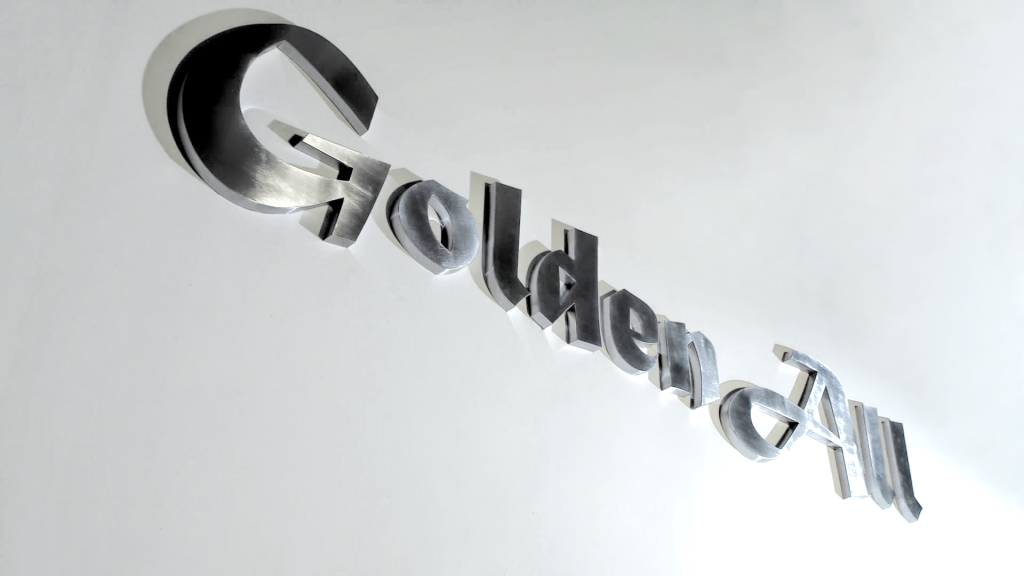Key words: Meniscus injury; Anti-gravity treadmill; Routine rehabilitation treatment; Plantar pressure test; Lysholm score
Objective: To explore the effect of anti-gravity treadmill walking training on plantar pressure in patients with meniscus injury after surgery.。
Methods: 40 patients with postoperative knee meniscus injury were recruited and divided into conventional treatment group and combined treatment group according to the random number table method, with 20 cases in each group. The conventional treatment group received conventional rehabilitation treatment, while the combined treatment group added anti-gravity treadmill walking training on the basis of conventional rehabilitation treatment. After 4 weeks of treatment, the changes in Lysholm scores of the two groups before and after treatment were observed; EMED plantar pressure analysis equipment was used to analyze and compare the plantar pressure-related indicators (maximum force, peak pressure, contact area) of the two groups of study subjects.
Results: After rehabilitation treatment, the Lysholm scores of both groups were significantly improved compared with those before treatment (P<0. 05), and the Lysholm score of the combined treatment group was also better than that of the conventional group, and the difference was statistically significant (P<0. 05)。 The maximum force comparison results showed that in the conventional treatment group, the maximum forces on the affected side’s hindfoot, 1st toe, and 3rd and 5th toes were all smaller than those on the uninvolved side, and the maximum forces on MH3 and MH4 were both greater than those on the uninvolved side. In the combined treatment group, the maximum forces on the affected side’s hindfoot , MH1 and the second toe area were all greater than the conventional treatment group (P<0. 05)。 The peak pressure comparison results showed that the peak pressure of the 1st toe on the unaffected side of the patients in the conventional treatment group was greater than that of the combined treatment group; while the comparison between the affected side and the unaffected side within the group showed that the peak pressure on the hindfoot and the 35th toe on the affected side of the patients in the conventional treatment group was higher The peak pressure of MH4 on the affected side of the patients was greater than that on the unaffected side. The peak pressures of the hindfoot and first toe on the affected side of the patients in the combined treatment group were both less than the unaffected side. Comparison of contact areas showed that the contact areas of the hindfoot, MH1, 1st toe and 35th toe on the affected side of patients in the conventional treatment group were all smaller than those on the uninvolved side.
Conclusion: Routine rehabilitation combined with anti-gravity treadmill walking training has a significant effect on patients with knee meniscus injury after surgery, which is better than conventional treatment methods. It can improve the Lysholm score after treatment and make the plantar pressure distribution closer to the normal state. This is It provides new ideas for the rehabilitation treatment of such patients.
Among sports injuries, knee meniscal injuries are very common. Minimally invasive surgical techniques combined with postoperative rehabilitation treatment are important methods to restore knee joint function. Conventional rehabilitation training uses joint mobilization technology, muscle stretching technology, muscle strength training technology, gait training and other methods to carry out step-by-step targeted treatment. However, there is a lack of early gait for patients who cannot fully bear weight due to pain, swelling and other reasons. training, resulting in abnormal gait in the later stages of the patient’s life, prolonging the recovery time and reducing the recovery efficiency. Anti-gravity treadmills provide the possibility for early weight loss walking training. Plantar pressure is an important parameter that characterizes the motor function of the lower limbs. Its size distribution can reflect the structure and function of the lower limbs and the control of the entire body posture. This study compared the Lysholm score and plantar pressure test results between two groups of patients after conventional rehabilitation treatment and combined anti-gravity treadmill treatment, and explored the gait change characteristics of anti-gravity treadmill for patients with knee meniscus injury after surgery. Provide a basis for optimizing postoperative rehabilitation programs.
.104-1024x689.png)
The subjects estimated the safe weight-bearing capacity through electronic scale measurement of the affected limb and feedback after treatment. They added 20 minutes of walking training every day on the basis of completing routine rehabilitation training. The patients’ pain level and gait data were monitored, and weight loss was adjusted to Achieve minimal pain levels and maintain normal gait. If the patient has abnormal gait, the weight loss can be increased or the speed can be reduced. The therapist can correct the patient’s abnormal gait through observation and verbal prompts. Treatment was 6 days per week for a total of 4 weeks.
Specific operation process: (1) Exercise preparation: The subject stood steadily on the running belt of the anti-gravity treadmill; (2) Start the exercise process: Set the weight and training time (20 min), and press START to start the exercise process. (3) The anti-gravity treadmill direction is selected to move forward. The speed and level of the anti-gravity treadmill are adjusted according to the patient’s actual tolerance and needs.


The anti-gravity treadmill reduces the load of gravity on the joints during the rehabilitation process by applying air pressure to the patient’s body, allowing the patient to focus on the correct movement pattern and gait; and reduces the pain and sports injuries caused by rehabilitation training under normal weight-bearing Risks allow patients to start walking training in the early stage of rehabilitation, extend the exercise time, improve body balance and cardiorespiratory endurance, shorten the patient’s recovery time, and establish correct movement feedback in the early stage to prepare for the return to normal gait in the later period.
In the comparison of peak pressure in this study, the peak pressure of the heel and 35th toe on the affected side of the conventional treatment group decreased, and the peak pressure of MH4 increased; in the combined treatment group, the peak pressure of the heel and 1st toe on the affected side decreased. ; The peak pressure of the first toe on the unaffected side of the conventional treatment group was greater than that of the combined treatment group, indicating that after walking training on an anti-gravity treadmill, the patient’s gait was optimized, but there was still a gap with the normal gait. Routine rehabilitation combined with anti-gravity treadmill walking training has a significant effect on patients with knee meniscal injury, which is better than conventional treatment methods. It improves the Lysholm score after treatment and makes the plantar pressure distribution closer to the normal state, which can Provide new ideas for the rehabilitation treatment of such patients.
